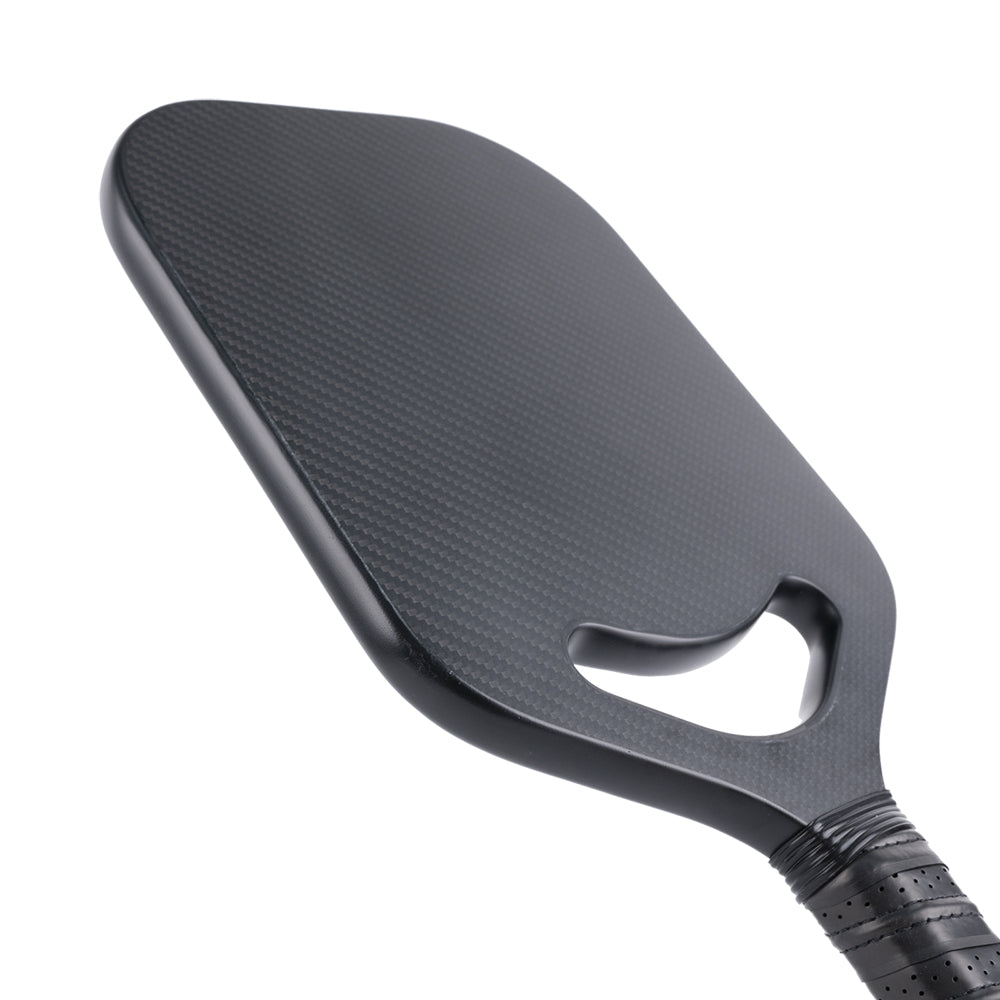
Edge Guard vs. Edgeless Paddles: What’s the Difference?
When shopping for a pickleball paddle, one small detail can have a big impact: the edge. You may notice some paddles have a visible plastic rim (called an edge guard), while others have a clean, seamless surface (edgeless). But what’s the real difference—and which one should you choose?
Let’s break it down.
🛡️ What Is an Edge Guard?
An edge guard is a protective rim—usually made of plastic or TPU—that wraps around the outer edge of the paddle. It’s attached during manufacturing to protect the paddle face and internal core from damage due to drops, scrapes, and edge hits.
✅ Pros of Edge Guards:
-
Durability: Extra protection against floor or court contact.
-
Longer lifespan: Prevents delamination or cracking from edge impacts.
-
Structural integrity: Helps maintain the paddle’s shape over time.
❌ Cons of Edge Guards:
-
Can interfere with shots: Slightly reduces usable surface area.
-
Weight imbalance: Adds weight toward the edge, which some players dislike.
-
Aesthetic break: Visually interrupts the clean look of the paddle.
✨ What Is an Edgeless Paddle?
An edgeless paddle removes the plastic rim and instead uses advanced lamination techniques or internal reinforcements to protect the paddle without adding a separate edge. It has a smooth, continuous surface that’s flush from face to frame.
✅ Pros of Edgeless Paddles:
-
Full hitting surface: No rim to get in the way of your shots.
-
Clean aesthetics: Sleek, modern look—loved by design-conscious players.
-
Lighter feel: Often better weight balance and faster swing.
❌ Cons of Edgeless Paddles:
-
Less protection: More vulnerable to damage on impact with the ground.
-
Shorter life span (potentially): Cracks or chips can develop more easily.
-
Higher price: Requires more advanced manufacturing techniques.
🎯 Which One Is Better for You?
It depends on your playstyle and priorities:
| Player Type | Recommended Edge Style |
| Recreational or beginner | Edge guard – more durable and forgiving |
| Aggressive, finesse player | Edgeless – smoother control and faster swings |
| Competitive/professional | Depends on paddle build and preference |
👀 What About Hybrid Designs?
Some modern paddles use ultra-thin or low-profile edge guards, offering a best-of-both-worlds approach: – Just enough protection to preserve durability – Minimal interference with performance and aesthetics
🏁 Final Thoughts
Edge guard or edgeless—there’s no universally “better” option. It’s about finding what fits your game. If you play hard and want extra protection, an edge guard might be essential. But if you’re all about precision, control, and that slick edge-to-edge feel, an edgeless paddle could elevate your performance.
At Joysent, we engineer both styles using premium carbon fiber materials and precision molding techniques—so no matter which you choose, you’re playing with confidence.
Previous post
Carbon Surface Grades Explained: T300, T700, and What They Mean
Next post








